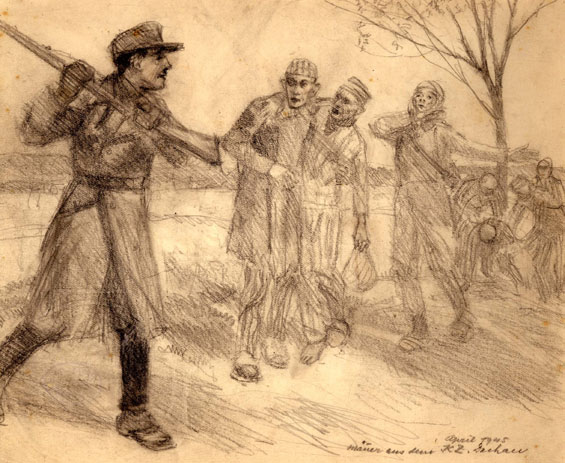Art

Hellmut Bachrach-Barée (1898-1969)
Men from KZ Dachau, April 1945
Pencil on paper
Collection of the Yad Vashem Art Museum, Jerusalem
Gift of the artist
Born in Munich, his father Emanuel Bachrach-Barée was a self-taught painter who works could be found in German museum collections and who worked as an illustrator for a number of German newspapers. In November 1944, Helmut Bachrach-Barée was arrested and sent for forced labor in Stassfurt, a sub-camp of Buchenwald to the west of Dessau.
With the fall of the Third Reich and the collapse of the eastern front, the Germans began evacuating hundreds of camps in Poland and western Prussia. In April 1945 they also began evacuating prisoners from the camps in Germany and Austria.
Following the evacuation of Stassfurt at the beginning of April 1945, Bachrach-Barée was sent to Buchenwald where he joined a death march of 4,500 prisoners in the direction of Dachau. The prisoners reached Bad Tölz camp in May. Following the Allied victory Bachrach-Barée was liberated and returned to Munich.
Throughout the march he documented, through drawing, that which took place.
Following the war Bachrach-Barée lived with his mother in a rural area, worked on a farm and painted horses, landscapes and portraits. He passed away during a visit to Munich.
